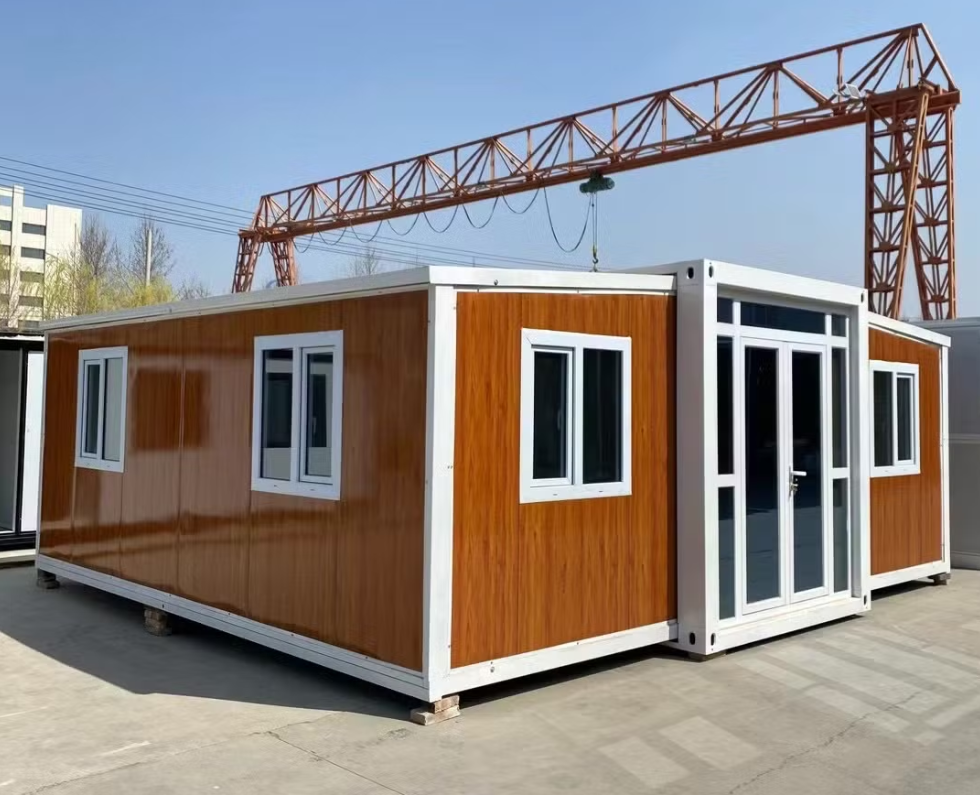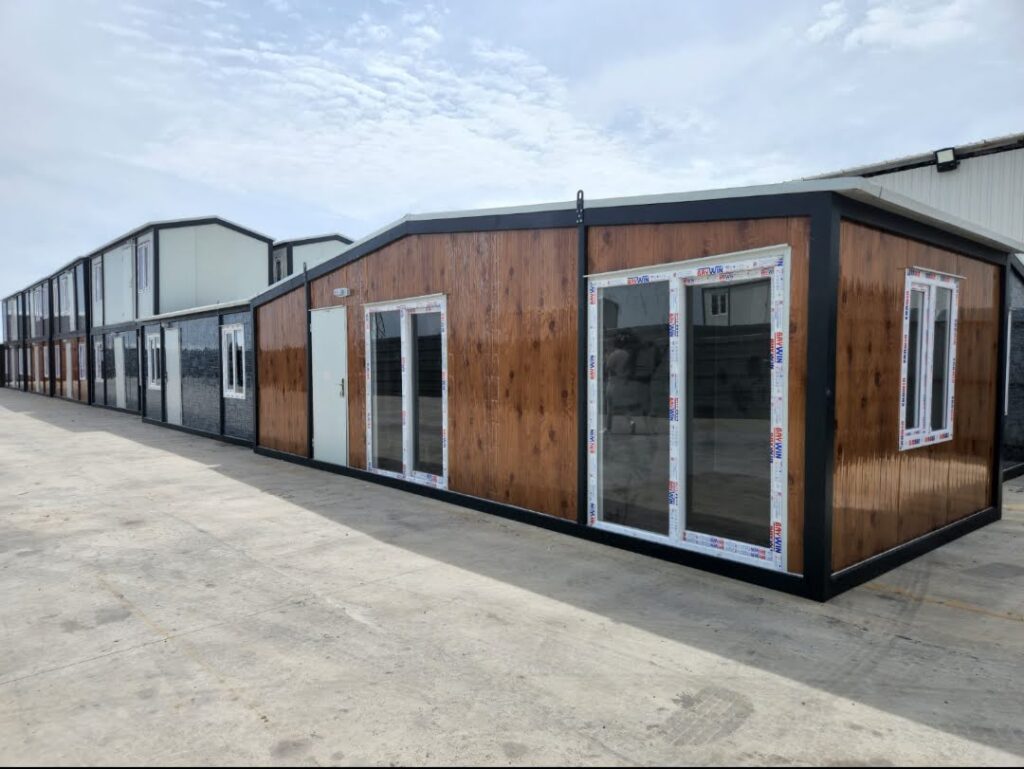Prefabricated container house now serves many modern needs. People use them for homes, offices, schools, hotels, and emergency shelters. Their popularity continues to grow in both cities and remote areas. Many people misunderstand them and think they are the same as normal container houses. However, these two concepts show major differences in structure, comfort, and production methods.
Prefabricated container houses use modular engineering and advanced insulation. Factories complete most work before delivery. This creates fast installation and consistent quality. Strong steel frames and finished interiors make them comfortable and safe.
Traditional shipping containers cannot match this level of performance without heavy modifications. Prefabricated units focus on long-term living and energy efficiency. This new building method supports sustainable development and reduces waste.
Prefabricated container house shows how construction can become faster, cleaner, and smarter. They offer modern solutions for housing challenges and commercial growth.
Differences Between Container Houses
Normal container houses come from used shipping containers. The steel walls already offer strong protection against impacts. Their original purpose involves transportation of goods. People cut openings for windows and doors to allow human use. However, insulation remains limited. The temperature inside changes quickly during hot and cold seasons. Living comfort stays low without heavy upgrades.
These shipping containers have fixed lengths and widths. The space feels narrow. Floor height cannot increase easily. Their industrial appearance often looks rough and unattractive. Modifying containers may weaken the structure if workers cut too much steel.

Prefabricated container houses follow a different design approach. Factories build modules using steel frames and composite panels. Walls include insulation layers and waterproof membranes. This improves comfort and energy performance. The modules allow different sizes and interior layouts. Architects can design rooms freely based on user needs.
Workers assemble prefabricated units quickly using bolted connections. Mechanical joints keep the structure stable and safe. Modules can combine to form multi-floor buildings. Large openings support bright and open interiors.
Prefabricated container houses also offer more exterior style choices. Colorful panels, decorative lines, and roof options improve visual appeal. These buildings blend into different environments easily.
In short, normal container houses focus on reuse of shipping containers. Prefabricated container houses focus on human comfort and long-term living ability. The differences reflect different goals and design concepts.
Advantages of Prefabricated Container Houses
Fast Construction
Factories handle cutting, welding, and interior installation. Workers only perform assembly on site. Construction time drops sharply. Projects can start operation much earlier.
Strong Flexibility
Modules stack or connect to form larger spaces. Owners can expand or move buildings easily. This versatility supports many applications.
Better Comfort
Insulated wall panels block outside heat and cold. Air stays comfortable with less energy use. Good sealing reduces dust and noise. Large windows improve lighting.

Aesthetic Freedom
Many finishes suit different architectural styles. Resorts, schools, and offices can choose creative looks. The result feels modern and friendly.
Safety and Durability
Steel frames resist earthquakes, storms, and heavy snow. Fire-resistant layers protect people and property. Anti-corrosion coatings extend lifespan.
Sustainability
Factories reduce waste through controlled production. Most materials can be recycled later. The process creates fewer environmental impacts. This helps cities reach green goals.
Affordable Cost
Prefab construction uses fewer materials and less labor. The long service life lowers maintenance expenses. Users receive high value from a modest budget.
Together, these advantages make prefabricated container house a smart and affordable choice for many building projects worldwide.
Manufacturing Key Points
Material Selection
Steel frames must provide strong load support. Anti-rust treatments protect against moisture. High-quality insulation keeps indoor temperature stable. Fire-resistant boards create a safe living environment.
Precise Fabrication
Modern equipment ensures accurate cutting, drilling, and welding. Wrong dimensions cause poor alignment and water leakage. Every joint must stay firm to guarantee stability.
Surface Treatment
Galvanizing or powder coating protects steel surfaces. Coatings resist fading and corrosion. Proper treatment extends product lifespan under harsh climates.

Structural Design
Engineers must calculate wind and snow loads correctly. Good design prevents deformation and keeps the building safe. Bolts and joints must match required standards.
Waterproofing and Sealing
Sealing strips reduce water entry and heat loss. Roof edges and corners need special attention. Good sealing protects interiors and improves durability.
Electrical and Plumbing Systems
Wiring and pipes should follow safety codes. Workers should place them inside safe channels. All systems require testing before delivery.
Quality Testing
Factories check strength, fire resistance, noise control, and insulation. Testing data must stay recorded for future reference.
Transportation and Handling
Modules need protective packaging. Workers must avoid impacts during loading and unloading. Storage areas must stay dry and clean.
Installation Guidance
Clear instructions help job sites avoid mistakes. Workers should tighten bolts to correct torque. Teams must inspect all joints before use.
Great manufacturing control ensures strong, safe, and long-lasting prefabricated container houses.
Prefabricated container houses offer a new direction for housing and commercial construction. They differ greatly from normal container houses in design purpose, comfort, and performance. Prefabricated units provide better insulation, flexible layouts, and fast assembly. Their strong steel frames and protective layers ensure safety and durability. They also reduce construction waste and support environmental goals.
This building method helps solve housing shortages, supports disaster relief, and expands tourism development. Businesses also gain benefits from quick installation and cost savings. With ongoing technological progress, prefabricated container houses will become even more advanced.
They show the future of efficient, sustainable, and affordable construction. They offer practical solutions and a modern lifestyle.
Post time: Oct-27-2025

